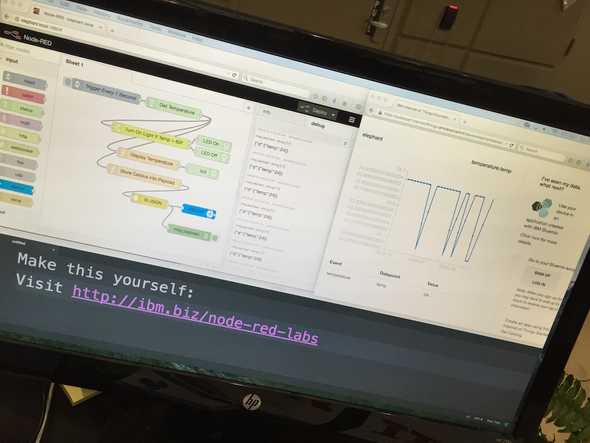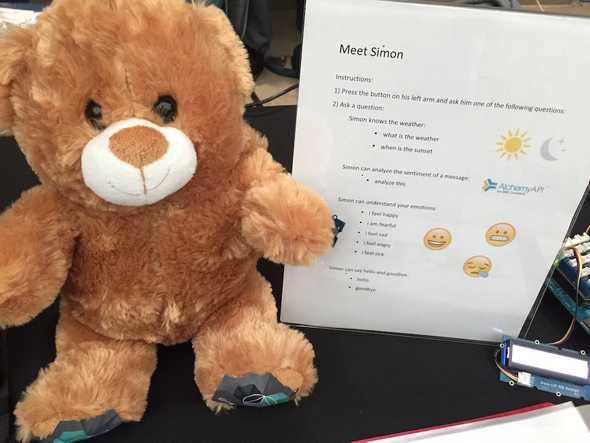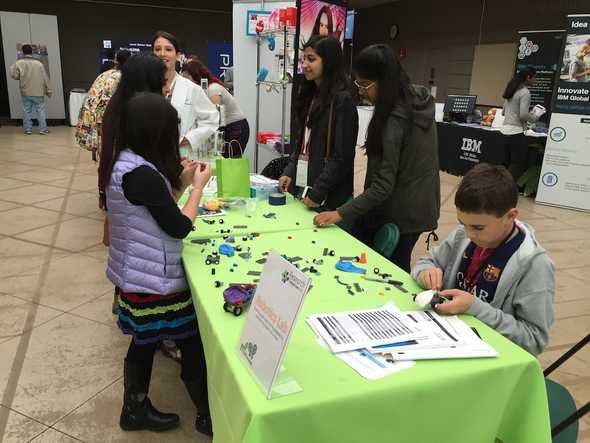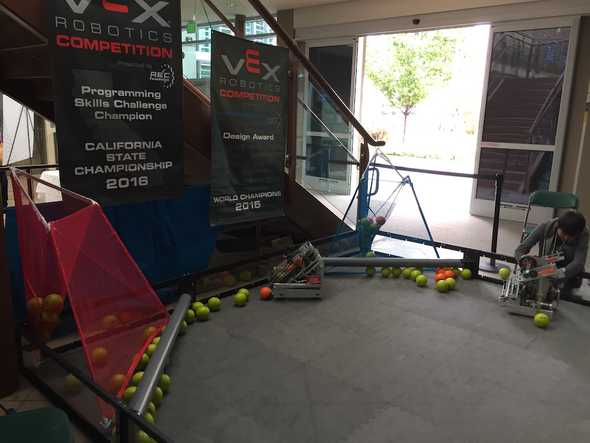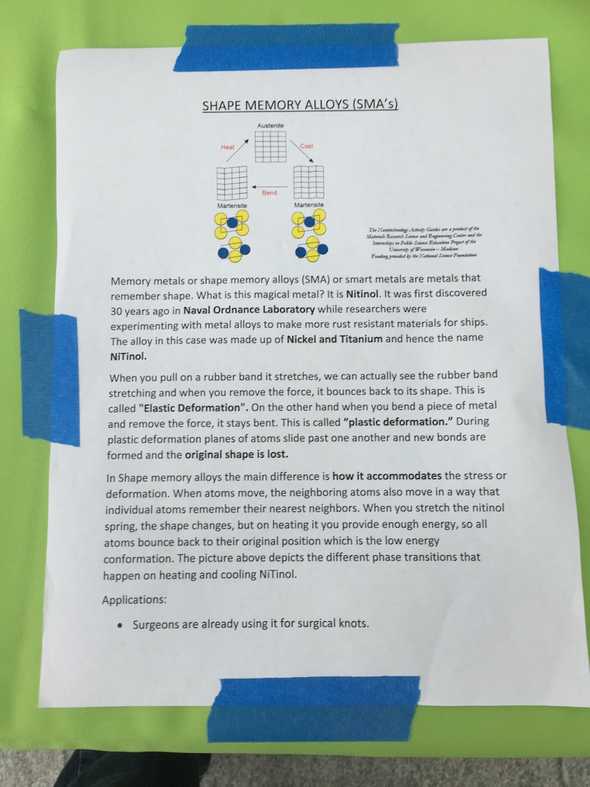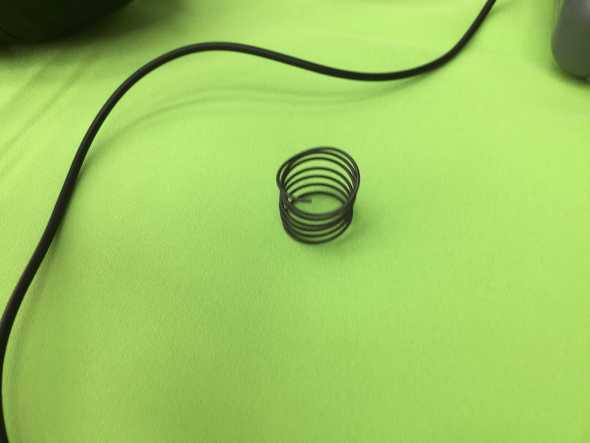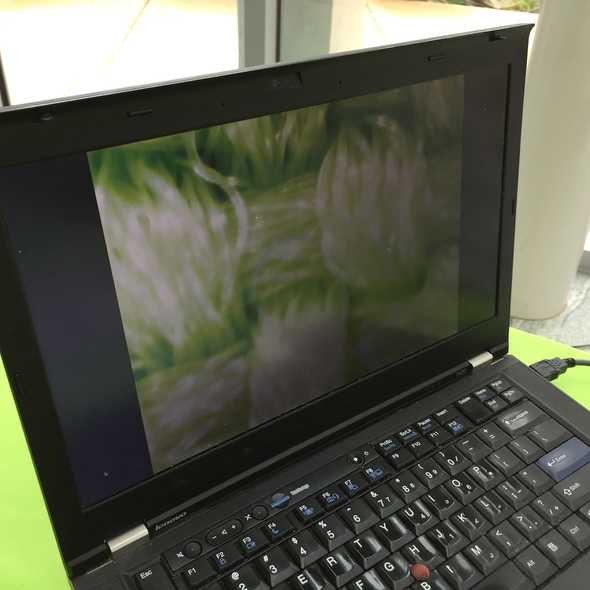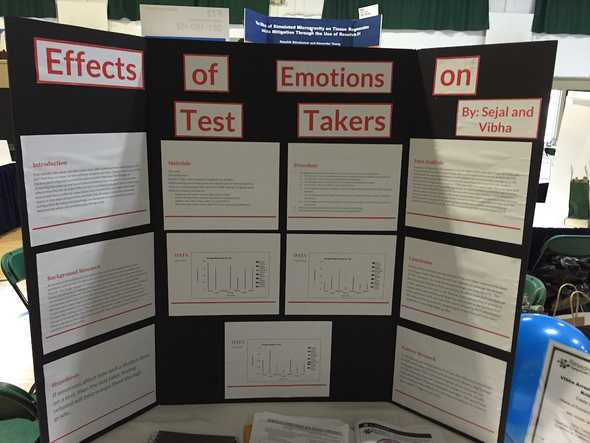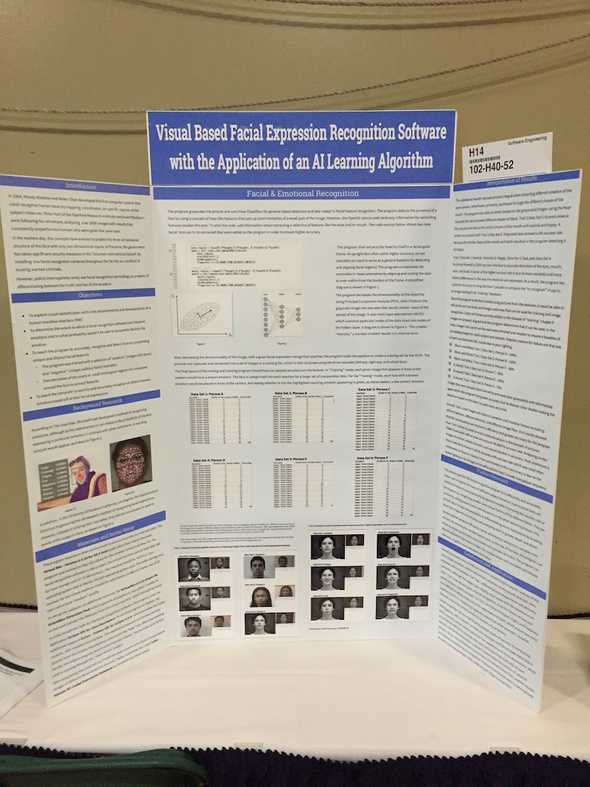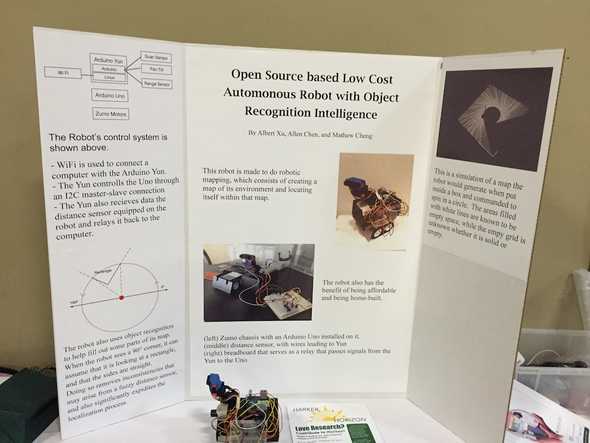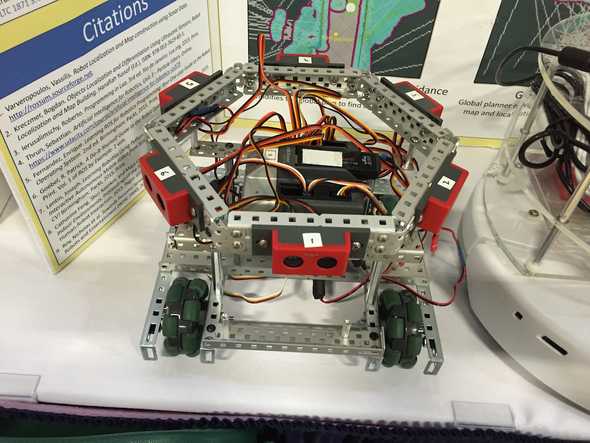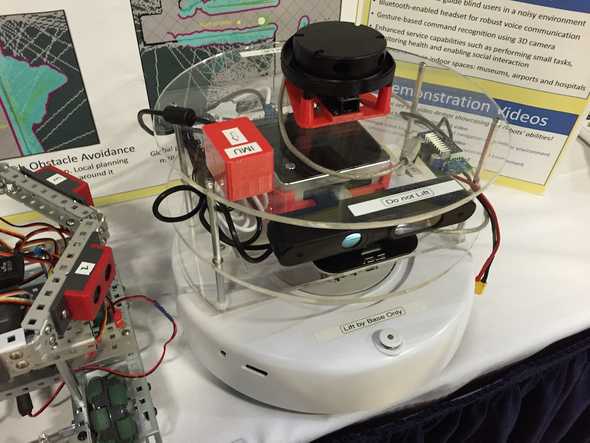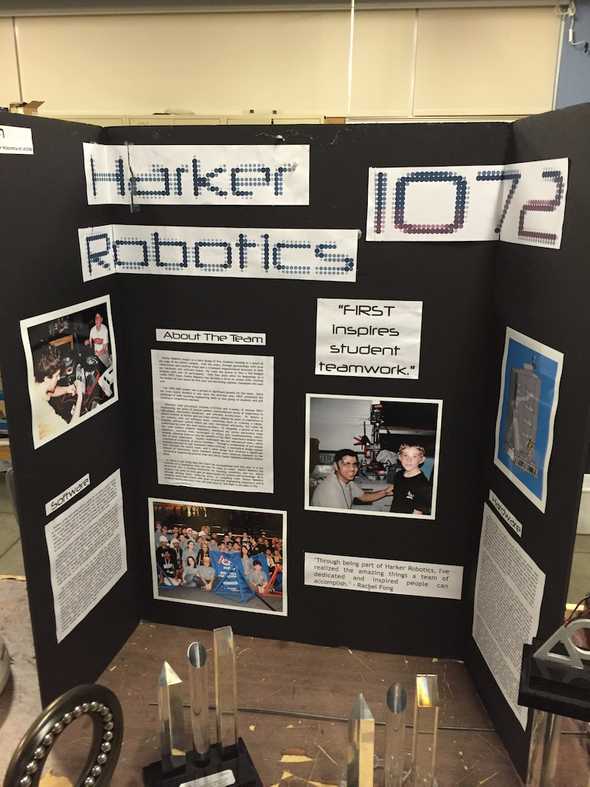Harker School Research Symposium
April 12, 2016 |
On Saturday, I had the opportunity to attend the Harker Research Symposium in San Jose. Angie Krackeler, also with IBM, and I inspired students and their parents on how they could use Node-RED and other services available in IBM Bluemix to make a variety of applications in just a few hours. Several of the demos used Node-RED, a graphical interface of drag and drop blocks built on top of the Node.js runtime.
Simon, the talking teddy bear, made his debut. Simon listens to your voice through a small microphone. The speech is converted to text via the Watson Speech to Text API server available in IBM Bluemix. A Node-RED application running on Bluemix matches the command to one of a handful of skills I’ve trained Simon to handle. The skill handler returns text back to Simon, where he uses the Watson Text to Speech API service to get the audio to play via a Bluetooth speaker. Simon is powered by an Intel Edison board using sensors from the Grove kit. Some of the skills Simon has learned include the current weather, what time the sun will set, how to analyze the sentiment of free-form phrases, and how to respond to a set of emotions (for example, I feel happy). Simon uses lessons learned from his older brother Alex the IoT Bear.
Other demos we showed included the Tone LED pin that analyzes the tone of tweets around a search term, for example IBM, and using 24 LED lights, the ratio of the Big 5 personality traits most prevalent in tweets per minute is displayed. An Intel Edison board using a Grove temperature sensor showed how you can quickly build an alert system when temperatures rise above a specified threshold.
I had the chance to see what the students have been working on. There was a Robotic Lab where students could build a LEGO robot powered by a balloon.
A demonstration of controlling robots from the Programming Skills Challenge Champion at the 2016 California State Championship.
Students showed off a fun experiment where a piece of wire made of Nitinol reformed into a coil under heat from a hair-dryer. The wire is composed of memory metals that remember their shape.
Have you ever wanted to see things up close? Students at another table showed how a Proscope magnified little details, such as the threads of a tablecloth.
In the Gym, students shared their research in a number of different topics. These students have shown some impressive skills in research that can inspire us all.
For each project, the students had to state an Introduction, Objectives, Background Research, a Hypothesis, Materials needed, the Procedure, Data Analysis, a Conclusion, and Further Research. Some topics included:
-
Effects of Emotions on Test Takers
-
Visual Based Facial Expression Recognition Software with the Application of an AI Learning Algorithm
-
Open Source based Low Cost Automonous Robot with Object Recognition Intelligence
-
A Location-Aware Service Robot For the Blind!
In the woodshop, ehmm, nowadays referred to as the Robotics shop, a student was controlling a military-grade rover with some heavy-duty tracks and maneuverability, and a camera that streamed to the controller.
Another group of students demonstrated using a Laser machine to scribe your name on a block of wood to take home as a souvenir.
It was truly inspiring to see the next generation showing such amazing intelligence and dedication to learning some really powerful things and discovering new research in the process. They are truly on the path to changing the world and the way we live and interact everyday.

